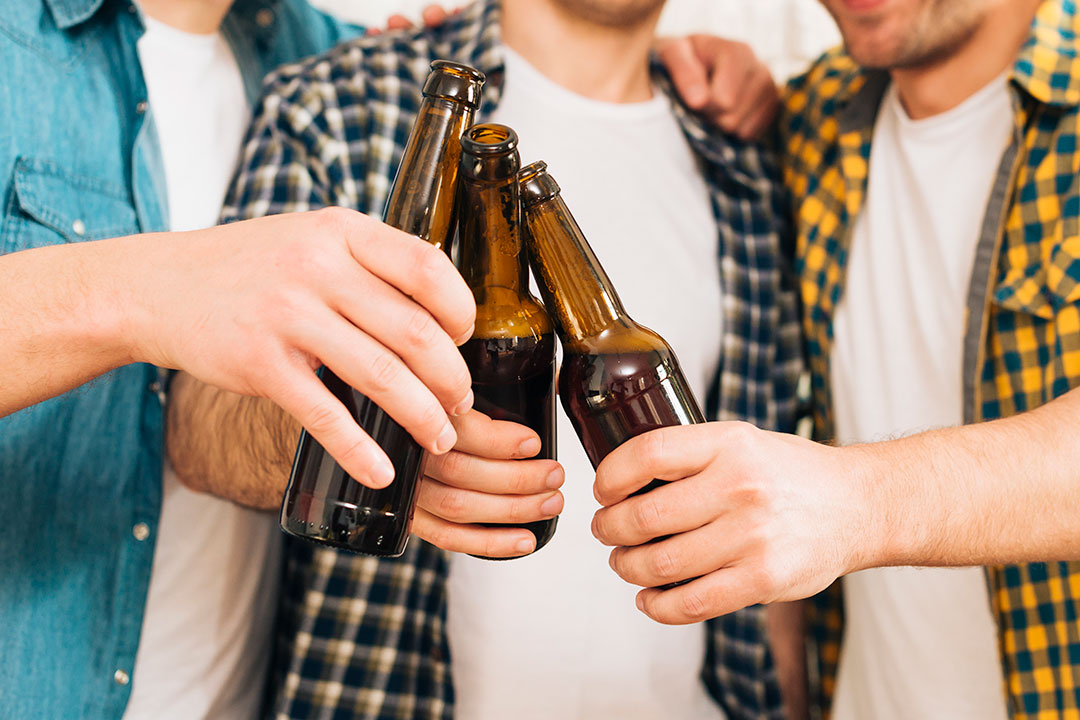
Yellow Pad
By AJ Montesa

April marks the annual observance of Alcohol Awareness Month in the United States, and although the Philippines does not formally have the same public health observance, the occasion is appropriate to raise awareness on the problem of alcohol use in the country.
April is a notable time for high school and college students as it falls near the end of the school year and is when many events take place, such as proms, graduations, and similar celebrations. For many, these events involve parties where young people might experience their first exposure to alcohol.
The latest statistics from the 2021 National Nutrition Survey revealed that about 47.1% of adults aged 20-59 consumed alcohol at least once in the year preceding the survey, while 24.4% did so within the month preceding the survey. These figures show that while the majority of Filipinos do not consume alcohol, the number, in the tens of millions, is staggering.
We must thus recognize the substantial societal impact of alcohol use. The perception that alcohol is a benign cultural norm obscures the significant risks and damage it inflicts — not only on those who consume it, but also towards the wider community. Each year, alcohol-related issues affect tens of thousands of Filipinos, emphasizing the need to reassess our attitudes and address its deep-rooted influence in our society. We must not underestimate the considerable prevalence of alcohol use and its profound societal consequences.
The death and disability caused by alcohol use are felt early in life. Alcohol use is the leading risk factor for Filipinos aged 20 to 39, killing more in that age group than even tobacco or drug use. Globally, about 13.5% of total deaths are attributable to alcohol.
The fact that young adults are at the greatest risk from alcohol-related harms should not come as a surprise. During this stage of life, many young adults seek to engage in exploration and experimentation. These young adults are also experiencing transitions in their economic and social life, including growing financial autonomy and economic productivity. These risks are exacerbated by the fact that aggressive alcohol marketing is often targeted towards these age groups and perceived norms tend to glamorize alcohol use as an essential part of socialization.
Health advocates often emphasize how alcohol use is associated with non-communicable diseases such as liver disease, cardiovascular disease, gastrointestinal disorders, and cancer. We must also acknowledge that alcohol use significantly contributes to the prevalence and severity of communicable diseases such as tuberculosis and pneumonia in developing countries like the Philippines. That alcohol is a contributing factor to the spread of communicable diseases has been so understated and yet is quite obvious — during the height of COVID-19, nobody questioned the policy of national and local governments to outright ban the sale of liquor during lockdowns.
While alcohol use can lead to both chronic (long-term or ongoing) and acute (sudden and short-term) health problems, it also introduces a number of acute social problems, often creating harm for those who themselves are not alcohol users, i.e., negative externalities.
In a previous column, I wrote about how drunk driving causes an average of nearly three deaths per day and how alcohol use contributes to over one quarter of all road crashes in the country (BusinessWorld, April 15)*. Road traffic crashes are the leading cause of death among people aged 15-29 years globally.
Alcohol use is also a major determinant of domestic violence. According to data from the 2022 National Demographic and Health Survey, alcohol use can double the risk of intimate partner violence. Worse still, women who reported their partners as being “often drunk” reported a five times higher rate of violence compared to women whose partners never drank alcohol — half of women with “often drunk” partners experienced some sort of violence.
The statistics in Table 2 demonstrate how alcohol use can harm innocent bystanders, and these can happen suddenly, causing the premature deaths of the otherwise young and healthy.
Thus, a call to action. Alcohol-attributable deaths, injuries, and diseases are preventable, and the degree to which we can prevent them depends largely on public policy.
We can learn from previous administrations, which demonstrated a concerted effort to combat the harms associated with other risk factors such as tobacco use. The Aquino and Duterte administrations implemented a balanced and most effective policy to address tobacco use — excise taxes to reduce smoking consumption and prevalence. Both administrations likewise increased alcohol tax rates, though moderately.
President Ferdinand Marcos, Jr. must reckon with the urgency of enacting higher alcohol taxes. Smoking prevalence has fallen by a third over a six-year span from 2015 to 2021, while current alcohol prevalence fell by about one seventh in that six-year period. The success in the effort to reduce tobacco use boils down to consumer prices rising faster than both income growth and inflation. To achieve a real change in consumption, we need taxes to outpace growing purchasing power. On average, cigarette prices increased by 14% every year, much faster than nominal per capita incomes, which grew by about 6.7% annually.
The same success has not been achieved for alcohol, where retail prices have risen at least one percentage point slower than income and inflation combined. Alcohol products are still too affordable, even with current tax laws providing for a 6% annual adjustment of tax rates. The data show that any percentage increase in the tax rate results in an equivalence of just half the increase for the retail price of beer and just over a third the increase for the retail price of spirits. Further, a 6% increase in the tax rate is likely to result in just a 3% increase in the final retail price, much slower than the growth in purchasing power. If we want alcohol taxes to be more effective, we need to double the current increases to outpace inflation and real income growth.
The President must also confront the fact the regulatory framework for alcohol is weak. Beer advertisements are allowed on the same tollways where cars often travel at speeds up to 100 kph. The major roads where the Metro Manila Development Authority (MMDA) warns against drunk driving are the same ones where large billboards of liquor are prominently featured. Drunk driving laws are scarcely enforced due to a lack of deputized officers and equipment.
Alcohol companies are allowed to aggressively market their products towards young audiences and are a prominent fixture in our sports competitions, with the country’s top two basketball teams being owned by San Miguel Corp. Meanwhile, there is no national law that effectively prohibits the sale of alcohol to minors. Presidential Decree No. 1619 of 1979 prohibits the sale of liquor with alcohol content 30% and above, allowing alcohol producers to effectively skirt this law by marketing products with low alcohol content like alcopops. With a lack of national policy, local government units are left with the burden of legislating and enforcing protections for children and youth.
Every alcohol advertisement ends with the message to “Drink responsibly.” The unfortunate implication of this message is that individuals are the ones who need to self-regulate and mitigate the harmful effects of alcohol. And while individual choices do play a role, we must acknowledge the powerful role of systemic environmental and economic factors. Our government must take on the role of creating a societal framework that supports healthier choices, rather than placing the onus solely on individual responsibility.
*https://www.bworldonline.com/opinion/2024/04/15/587793/the-case-for-improving-drunk-driving-laws-in-the-philippines/
AJ Montesa heads the tax policy team of Action for Economic Reforms.